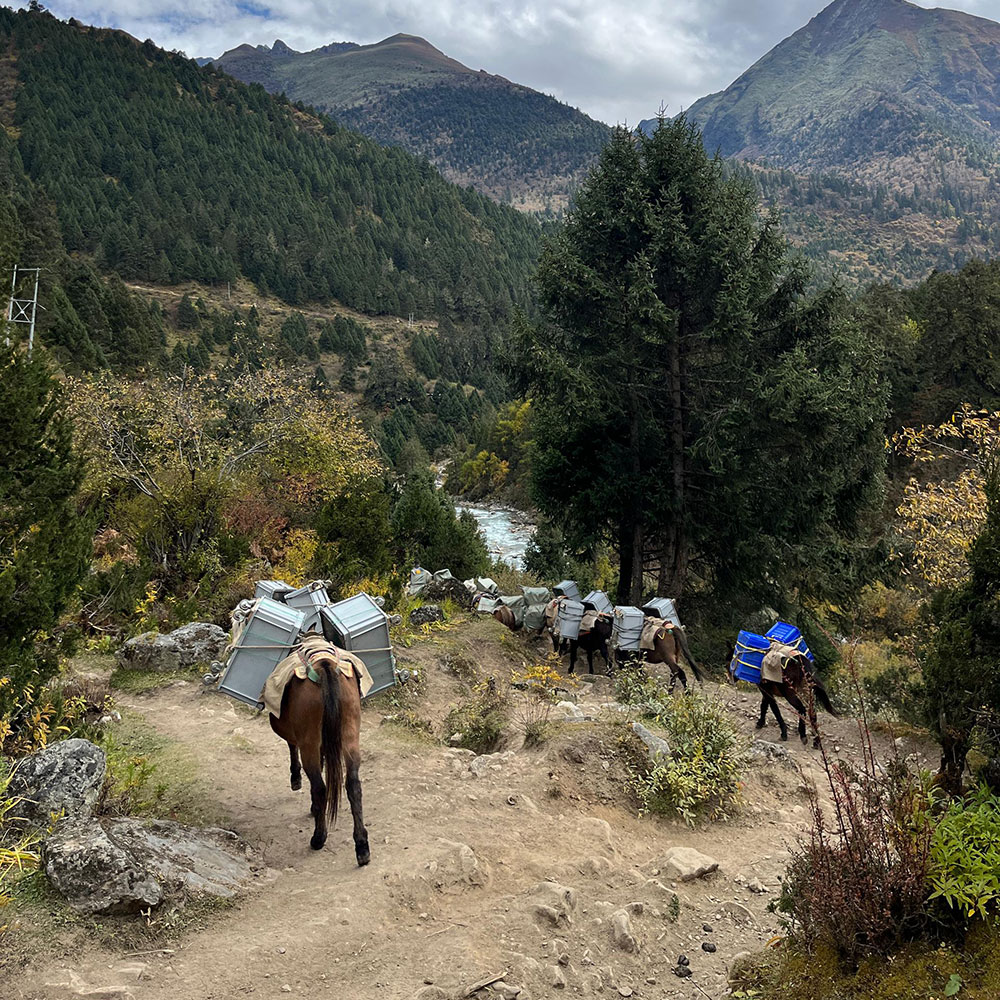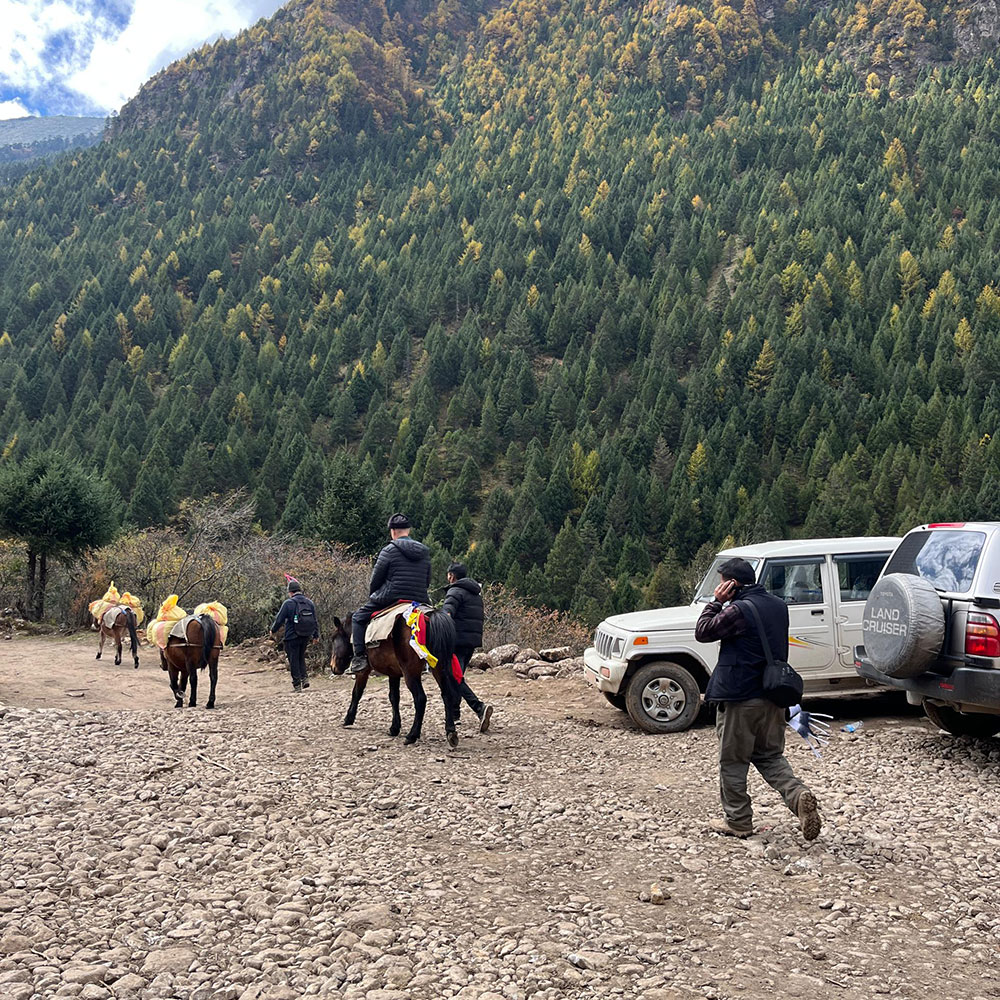Chencho Dema
In Laya, horses play an important role in supporting the community’s economy.
When the region had no roads, horses were the only means of transportation, carrying villagers and their loads across rugged terrain and steep paths that required days of exhausting travel.
The road construction project began in the 2012-13 fiscal year. The 24-kilometre stretch from Gasa to Tongchudrak was completed in 2018.
The original plan was to construct the road only up to Tongchudrak, requiring Laya residents to walk the final leg of their journey, which would take an additional four hours. However, the construction was later extended by 6.1 km to reach Taktse Makha. Work on this section began on September 21, 2023, and is expected to be completed by April 7, 2025.

The number of horses in Laya has steadily grown over the years, increasing from 1,068 in 2021 to 1,799 in 2023
Gasa was connected by a 74-km National Sub-Highway from Punakha only in 2011. The journey that once took two days on horseback can now be done in just three hours by car.
Residents previously earned between Nu 800 and Nu 1,000 per horse load, with even higher rates for providing horse rides from Ponjothang, the former road endpoint. With the road now extended to Taktse Makha, they charge Nu 600 per load and over Nu 1,000 for horse rides.
Some residents at times make two to three trips a day.
Despite the new road to Taktse Makha, the journey remains challenging. The nearly two-hour uphill trek still relies on the strength of horses, which carry heavy loads and sometimes riders, ensuring essential goods and people can navigate the rugged terrain.
The bond between horse and human in Laya exemplifies resilience, tradition, and the enduring spirit of a community that has flourished in harmony with its majestic surroundings.
The number of horses in Laya has steadily grown over recent years, increasing from 1,068 in 2021 to 1,538 in 2022, reaching 1,799 in 2023.
Laya Gup and Thrizin of the Dzongkhag Tshogdu, Tshewang, said that the number of horses in Laya now exceed the number of residents.
Laya, located at 3,800 metres above sea level, is the second-largest gewog among the four in Gasa, with a population of 1,108 and approximately 286 households. It is one of Bhutan’s most remote villages.
“Horses are essential to the Layaps. From carrying firewood and LPG cylinders to transporting sick people to the road, we rely on horses,” he said.
Tshewang said that Laya has around 1,700 horses for approximately 286 households, averaging 8 to 12 horses per household.
Passang, a 66-year-old Tshogpa, said that while cordyceps collection is an important source of income for the community, it is seasonal. “Horses have always been our primary source of income, and they will continue to be so.”
Another resident said that horses have become a valuable investment for him. Unlike in the past, people now purchase more horses than yaks due to their significant role in daily life.
Horses are deeply embedded in the cultural traditions of Laya, often featured in local festivals and rituals, which highlights their importance beyond mere economic utility.
During the annual Royal Highland Festival, beautifully adorned horses, groomed and decorated, stand gracefully behind the tents. Their majestic presence invites visitors to pose alongside them for photographs, capturing the spirit of the celebration. For those seeking a unique experience, the horses also offer short rides.
The scenic beauty of Laya attracts tourists, many of whom are eager to participate in horseback riding experiences. This not only boosts the local economy but also promotes the preservation of traditional horse-breeding practices.
In addition to enhancing connectivity and attracting more tourists, the Laya gewog administration plans to renovate traditional horse trails that connect key destinations such as Lunana, Gasa Tshachhu, and Lingzhi, with Masagang serving as the base camp.
This initiative, set for the second year of the 13th Plan, is expected to increase residents’ income.


